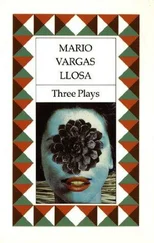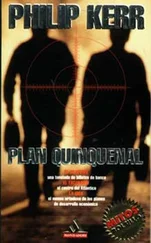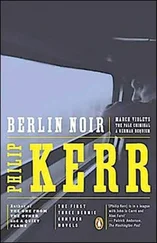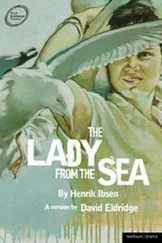“You might reasonably think that it would be impossible to mistake the identity of a murdered girl. You would be wrong. It turned out that one of the nine murdered girls was someone else: the girl we thought she was had, after a year living in Hannover, turned up safe and well. Meanwhile I was struck by how much work had gone into the investigation and how many people the detectives in the Murder Commission had managed to interview. But by the time I finished I knew the case as well as any detective who’d been in on the case since the beginning.
“Now, before joining the Murder Commission I had been a sergeant working in Vice. Consequently many of my informants were to be found in some less than salubrious places, including a place called the Hundegustav Bar. Previously known as the Borsig Cellar, this was a real dive. At the Hundegustav they had some private rooms where they used to show what were called Minette movies — movies that explicitly featured naked girls on film. Not only were such pornographic films tolerated under the Weimar Republic, incredibly they were actively encouraged as a way of asserting the complete freedom that characterized a modern society — one that had left behind outmoded concepts like morals and accepted standards of behavior. This is one of the reasons why Germany demanded a Nazi revolution in the first place.
“Anyway, I was in there on police business — well, I would say that, wouldn’t I? — and I happened to see one of these films and something about the girl in the film struck me as familiar. I’d seen her before somewhere. But it was several days before I thought to check the Kuhlo case files, and when I did, it turned out that the girl in the film was none other than Amalie Ziethen, the very first girl that Gormann had strangled.
“I went back to the club with my commissar to interview a thief called Gustave the Dog, who owned the Hundegustav Bar. We checked the film and were astonished to find the girl’s name scratched on the film’s leader and also the actual date of her death. Gustave told us he’d paid cash for the film; the man who’d sold it to him hadn’t left a name, of course, but he described him well enough. A respectable man with a bow tie, stiff collar, a limp, perhaps an injured arm, a bowler hat, and an Iron Cross on his lapel. I had an artist friend draw a likeness of the man to Gustave’s exact instructions. Then I went around to some of the other clubs looking for a man like this who might have sold them a Minette movie. But I always drew a blank.
“Doubtless many of you are familiar with the phrase Media vita in morte sumus . I think all homicide detectives have this written on the inside of their hats. And you can hear that sentiment in a poem by the great German poet Rilke, of whom I am fond, which goes, ‘Death stands great before us, We all are his, Even our most carefree laughter to him belongs, and in the midst of the joy that life is, Mortal tears are most immortal songs.’” [1] Author’s own translation of Rilke’s poem Schlussstück .
I glanced up as Heinrich “Gestapo” Müller took out a notebook and started to make notes with a silver pen. Was he — I wondered — a fan like me of Rilke? Or was there another, more sinister reason why he was making a note? Was he reminding himself to have some of his thugs come to my flat on Fasanenstrasse in the early hours and arrest me? That was the thing about Müller; as a policeman he was a real wire brush: it was hard to think of him having anything but sinister reasons for doing anything at all.
“Since detectives on the Murder Commission live with death as much as anyone, it’s perhaps natural that they should often believe that murderers stop only because they get caught or because they are dead. Nearly all of the detectives in the Murder Commission who were on the original investigation believed what they wanted to believe: that the killer had been stricken with remorse and committed suicide. But given the fact that the murderer might have been the man in the bowler hat who’d sold Gustave the Minette film, it was now equally possible that this earlier explanation as to why the killer had simply stopped after the last Kuhlo killing — that of Lieschen Ulbrich — was wrong. So I asked myself what other reason might have accounted for the strangler giving up an activity he seemed to very much enjoy? Had something else happened to the Kuhlo killer? Something that had made him stop killing? If he wasn’t dead, had he perhaps left Berlin? Returning to a lengthy list of witnesses who’d been interviewed, I started to investigate what dramatic life events had occurred to any of these men five years ago that might have put a stick in the spokes of a lust murderer’s career. And finally I came up with a list of possible suspects, at the head of which was the name of Fritz Gormann.
“Gormann had been awarded a second-class Iron Cross in 1917, having served as a train transport commander with a field artillery regiment. He had a limp, which was the result of an injury sustained in 1916. As I mentioned, Gormann had been a suspect until detectives rejected him on the grounds that the bank clerk — now a bank manager — was perceived to be much too mild-mannered ever to kill someone. This was nonsense as his military record clearly demonstrated that Gormann’s medal had been awarded for courage under fire.
“Further research revealed that on the day before his wife’s fortieth birthday in the summer of 1923, Fritz Gormann visited Braun’s jewelry shop at 74 Alte Jakobstrasse. The shop had been robbed twice before — in January 1912 and again in August 1919. Unknown to Gormann when he visited the shop to buy his wife a brooch, the shop was in the process of being robbed a third time. Gormann entered the store to find Herr Braun, the proprietor, lying dead on the floor and a man advancing upon him from a back room with a gun in his hand, demanding the cash that Gormann had brought with him to buy the brooch. Gormann refused and was shot, but not before he managed to hit the murderer with the lead-filled cosh that Braun had kept for self-defense. The robber was subsequently captured and executed while Gormann himself spent six months recovering from his wound in the Charité Hospital.
“But as a result of his wound he lost the use of his right arm, which, I’m sure you will all agree, is a considerable disadvantage for a strangler. And recognizing that his career as a lust murderer was now at an end, Gormann sold his studio in Lichterfelde and went back to being a respectable member of Berlin’s banking community. It seems incredible but it was as simple as that.
“Gormann’s picture as the hero of Alte Jakobstrasse had appeared in the newspapers at the time. And so I took this picture to the Hundegustav Bar, where Gustave himself confirmed that Gormann was indeed the man who had sold him the pornographic Minette film. But was he the killer? It’s one thing selling an erotic film that includes a real murder, but that doesn’t necessarily make the vendor a murderer.
“The next day I went to the Dresdner Bank at number 35 on the south side of Behren-Strasse and Friedrichstrasse to take a closer look at my suspect. I was still not entirely satisfied that we had our man, and this feeling was underlined when, after we arrested him, we searched his house and found — nothing. Not one can of film. Not one length of Kuhlo wire. Nor any curtain material that matched the piece we had. Nothing. And of course Gormann himself denied everything. Back at the Police Praesidium on Berlin’s Alexanderplatz I was beginning to feel like a bit of a fool. Actually it was worse than that. I felt low enough to think that maybe I wasn’t cut out to be a detective, after all. I don’t mind telling you that I almost handed in my warrant disc right then and there.
Читать дальше












